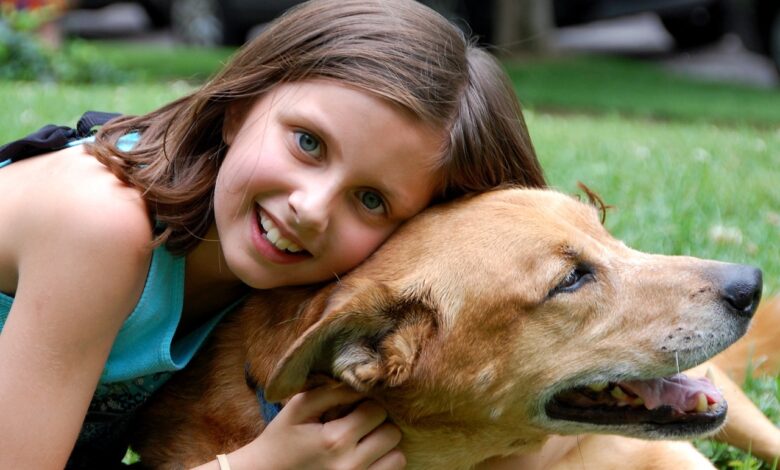7 Signs Your Dog Is Actually Happy

Ensuring the happiness of our dogs is a top priority for any dog owner. A happy dog is a joy to be around and a sign of a healthy, well-adjusted, and well-cared-for pet. Recognizing the signs of a happy dog can help owners continue to provide the best care and environment for their furry friends. Unlike humans, dogs communicate emotions through body language and behavior rather than words. Understanding these signs is crucial for interpreting a dog’s feelings. From the wag of a tail to the energy in their play, each sign of happiness is a puzzle in understanding our canine companions. This article will explore seven key indicators that suggest your dog is genuinely happy, providing insights into their well-being and how to foster an environment that continues to support their happiness.
1. Relaxed Body Language
A happy dog often displays relaxed body language. This includes a loose posture, with no tension in the body, a gently wagging tail, and ears in a natural position, neither pinned back nor perked up too high. Their eyes might appear soft, with no hard staring, and their mouth might be open slightly with a relaxed, “smiling” expression. This calm demeanor indicates that a dog feels safe and content in their environment, free from stress or discomfort. Understanding and recognizing these signs helps owners gauge their dog’s emotional state and ensure they are providing a nurturing environment.
2. Engaging in Play
Playfulness is a clear sign of a happy dog. When dogs engage in play with their owner, other dogs, or even by themselves with toys, it manifests their joy and energy. This could include running, jumping, playing fetch, or any spontaneous game they initiate. Playful behavior is crucial for a dog’s mental and physical health, serving as an outlet for energy and social interaction. Encouraging and participating in your dog’s playtime supports their happiness and strengthens your bond with them.
3. Tail Wagging
While tail wagging can indicate a variety of emotions, a relaxed, wagging tail usually signifies happiness, especially when accompanied by other signs of positive body language. The wagging tail of a happy dog is typically broad and seems to involve the whole body. This type of wagging shows that a dog is in a good mood and comfortable with the people or other animals around them. Observing the context and other body language cues helps owners differentiate between happiness and other emotional states involving tail movement.
4. Healthy Appetite
A healthy appetite is often a sign of a happy dog. When dogs are content and feeling well, they tend to maintain regular eating habits. Sudden changes in appetite can be a sign of stress, illness, or anxiety, but a steady interest in food suggests that a dog is in good spirits. Of course, maintaining a balanced diet and not overfeeding is essential to keep your dog healthy and happy. Owners should monitor their dog’s eating habits to ensure they reflect a positive well-being.
5. Showing Affection
Happy dogs often seek affection from their owners, enjoying cuddles and pets and spending time close to their humans. This behavior indicates trust and comfort, showcasing their bond with their owner. Seeking affection is a dog’s way of expressing love and contentment, clearly showing their happiness. Reciprocating this affection reinforces the bond and supports their emotional well-being.
6. High Energy Levels
Generally, a happy dog will display high energy levels and enthusiasm for activities, walks, and playtime. This zest for life is a positive sign, indicating good physical health and emotional contentment. Of course, energy levels vary by age, breed, and individual dog. Still, a noticeable interest in being active and engaged with their surroundings indicates a dog’s happiness.
7. Sleeping Well
Just like humans, dogs need quality rest to be happy and healthy. A happy dog will have a regular sleeping pattern, taking several naps throughout the day and sleeping soundly at night. This indicates they feel safe and relaxed in their environment, free from stress and anxiety. Disturbed sleep or changes in sleeping patterns can indicate discomfort or unhappiness, making it essential for owners to provide a comfortable, secure resting place.
Recognizing the signs of a happy dog is essential for any responsible pet owner. By understanding and looking out for these indicators—relaxed body language, engaging in play, tail wagging, a healthy appetite, showing affection, high energy levels, and sleeping well—owners can provide a loving and supportive environment for their pets. Happiness in dogs, as in humans, is a combination of physical health, mental stimulation, and emotional connection. Maintaining this balance is critical to fostering a joyful and fulfilling life for our canine companions.






